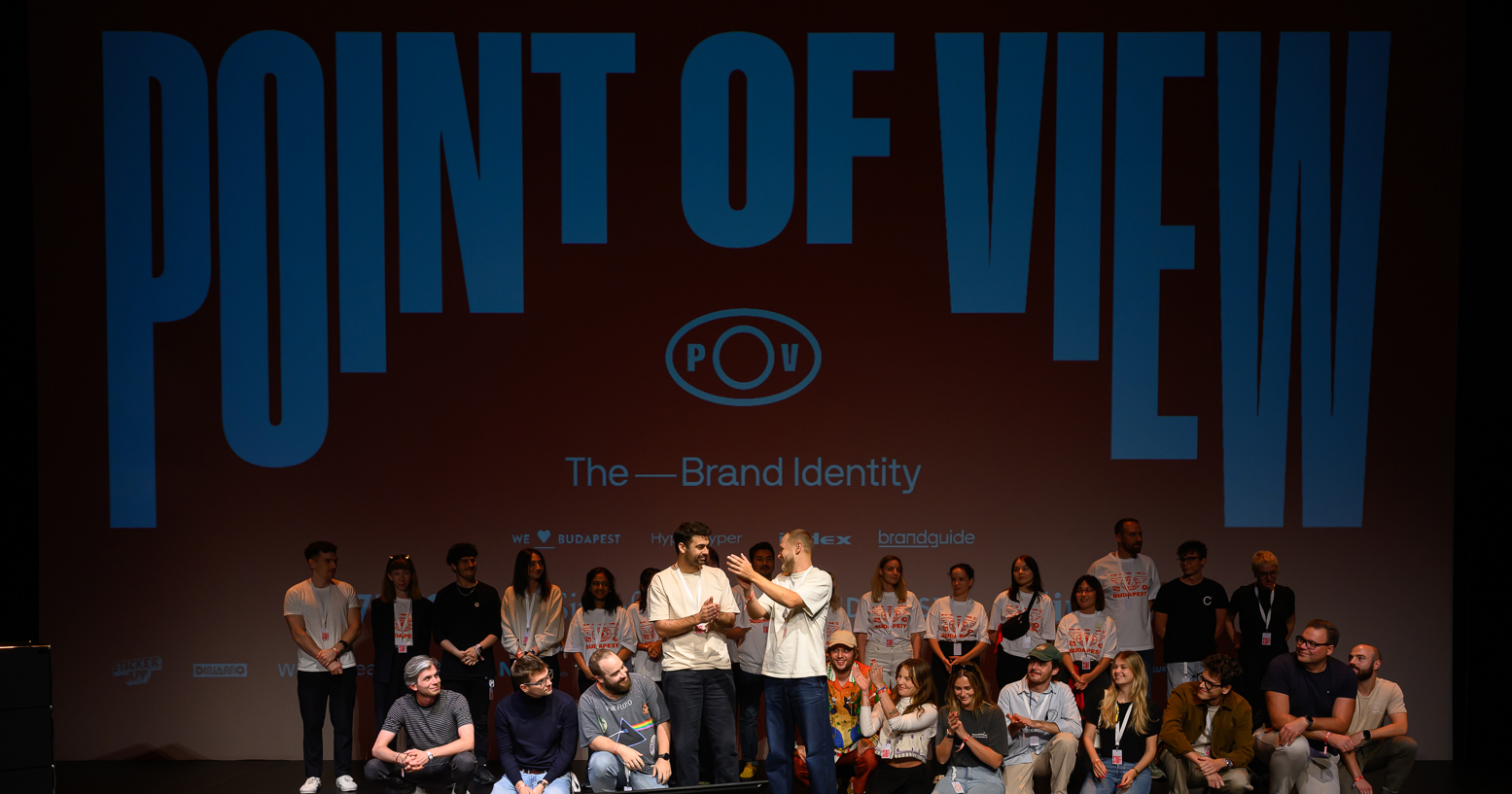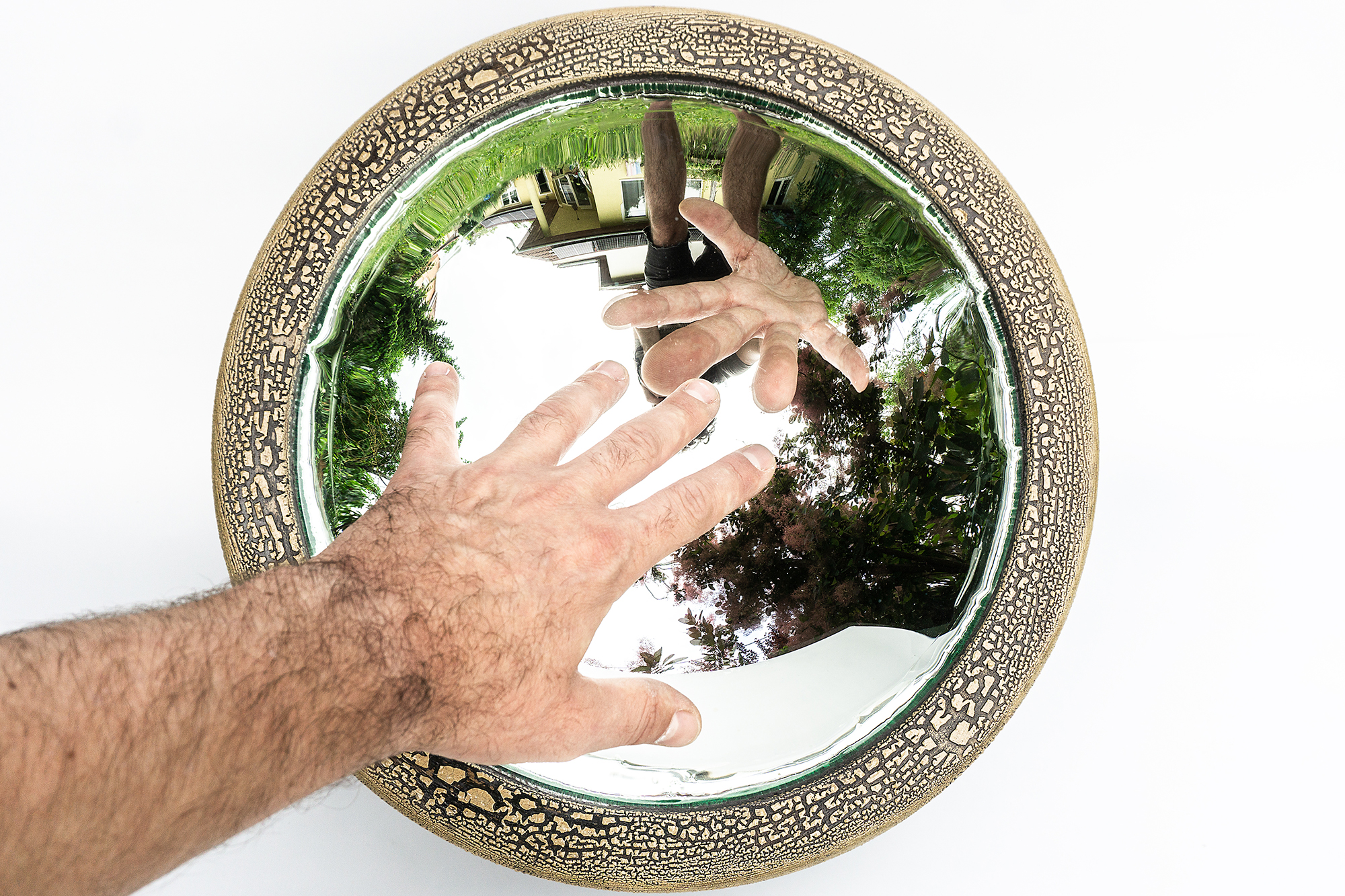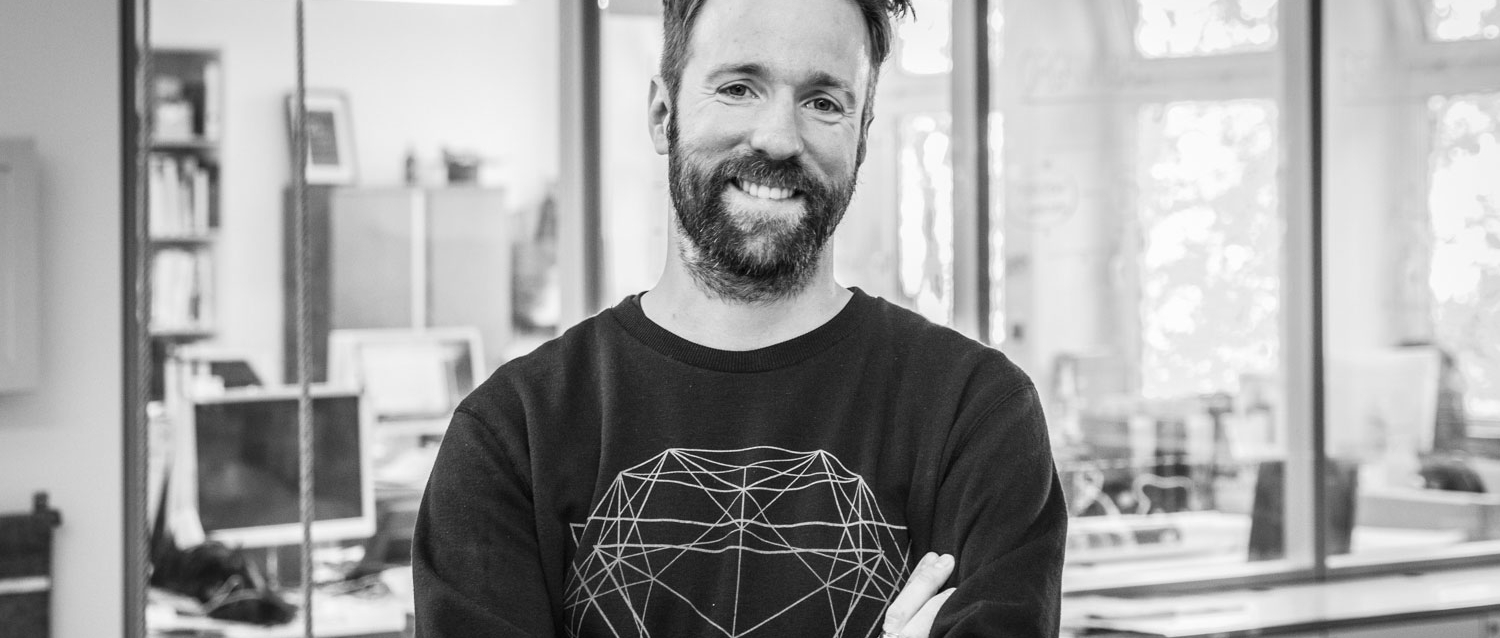
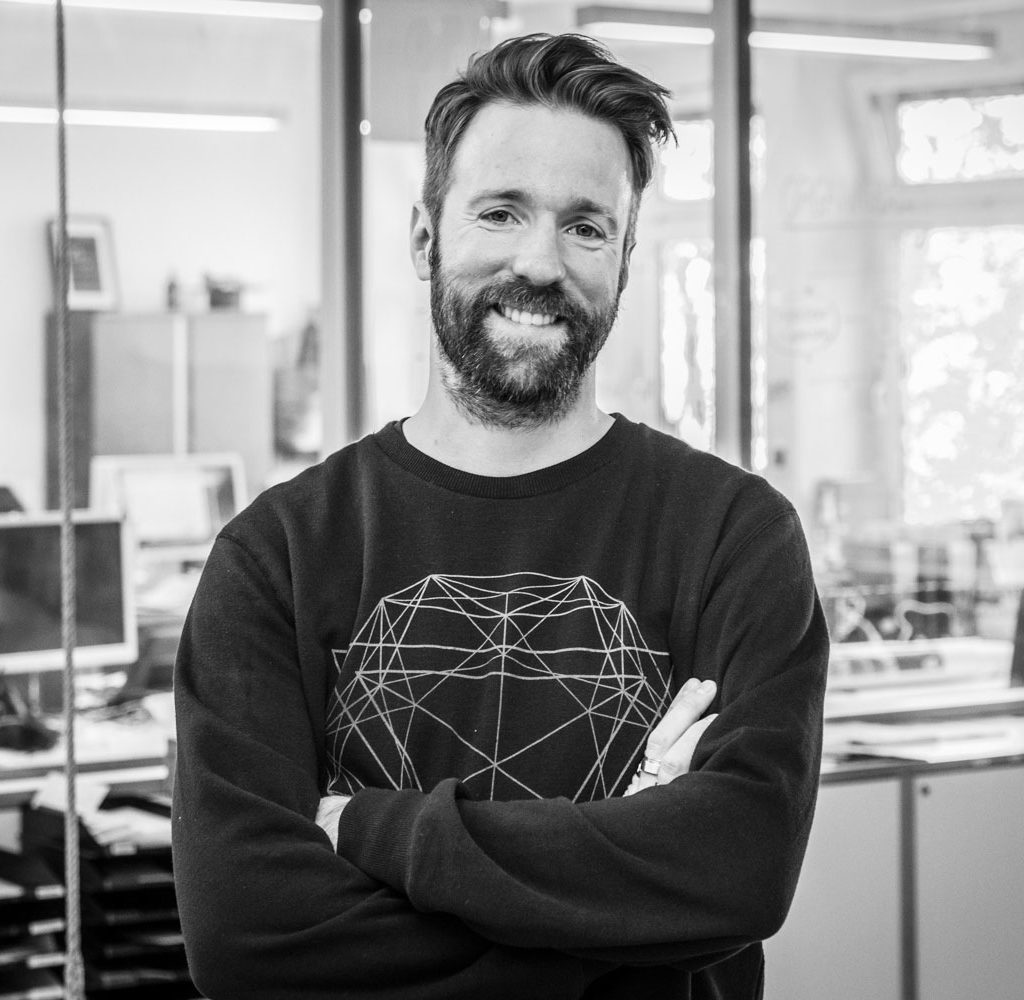
Design as Translation – Tom Bieling on the Politics of Emerging Technologies, Speculative Design and the Possibilities of Inclusion
“Design might be the very reason why people cannot do certain things or cannot join certain processes” – says Tom Bieling, senior researcher at Zentrum für Designforschung (Hamburg). He gave a lecture on speculative design activism at Moholy-Nagy University of Art and Design Budapest last semester, and we had the opportunity to ask him about contemporary design strategies and the social aspects of technological innovation.
Your book “Inklusion als Entwurf” (Inclusion as Design) has been published recently. Can you summarize the main claims of the book? What is your starting point?
I put the focus on co-relations between design, inclusion and exclusion. Design can be very helpful: it can work as an enabler for people to take part in certain social practices or to get access to information. At the same time, design can also create a barrier to access. In some cases, design might be the very reason why people cannot do certain things or cannot join certain processes… the interface might not be intuitive, users do not understand what to do, maybe the technology is too expensive… In Inclusion as Design I discuss different levels, connecting points design can have with inclusion. I differentiate between design of inclusion, design for inclusion and design by inclusion.
What are the differences between them?
Design of inclusion puts emphases on the political aspects of inclusion and exclusion. How do we set up the fundamental basis for an inclusive society? Whereas design for inclusion covers inclusive practices supported by designed things. The third aspect is design by inclusion, which focuses on the process of design. How do I let people take part in the design or research processes? The more participatory the process, the bigger the chance that the results will be inclusive too.

It seems like you are advocating a human-centered design approach…
Yes, I do. However, I also believe that the approach of human-centered design, which is now largely common sense anyway, is sometimes part of the problem, too. Be it because it refers too much to the species “human”, or because the term “human” – consciously or unconsciously – is interpreted in an under-complex way, for instance from an overly euro-/anglocentric, white, male, ableist perspective. Nevertheless, in participatory projects, you make it possible for people to join from the very first moment. They do not have to face a finalized product or situation at the end of the project, but can make their voices heard throughout.
How much inclusion do emerging technologies allow? Can design play a role in the social distribution and human-centered “translation” of new tech-solutions?
The concept of “innovation” is very much technology-driven in its connotations. However, plenty of things are technologically possible, but the acceleration is so high, that we reached a point where human beings are not fast enough to follow it. We do not have the brain capacity, the financial capacity, or the time to adapt ourselves to new technologies. We cannot buy or learn all the new things at once. Obviously, this raises the question, whether it makes sense to come up with newer and newer technologies. Even if they are not always entirely new… but rather updated versions of themselves.
From a user’s perspective, you are repeatedly confronted with the fact that you are not fast enough: you still need another system update, another design update and so on. I can of course understand the commercial intention there. This dynamic makes people addicted to certain technological solutions, makes them dependent, and puts the companies on the top of the power hierarchy. We, as designers, have to ask whether people could look for other solutions.
Your description resonates with Franco “Bifo” Berardi’s words: “when the acceleration of cyberspace breaks the rhythm of mental time, and we no longer know what is relevant and irrelevant in our surrounding environment, this is what we call »chaos«.”[1]
Well, many people are getting away from digital products. Not entirely, but partly. Trying to set up new safe spaces – spaces for “digital detoxification”, so to speak. In the projects I have been doing together with design students, I observed, that they are very often thinking reflexively in terms of technical solutions. Also, too often, students allow the technology to drive their solutions instead of focusing on the starting situation itself. The solution should be the best one for the problem, not just the best one the technology will allow them to create. I find myself in the situation, where I have to ask them: “are you sure that you need a technical solution here? Aren’t there other solutions? Ones focusing more on human interactions, rather than the human-technology interaction?” This is an aspect of designing, I am very curious about. Probably we cannot stop the train anymore, but we have to discover that we do not need technology in every single corner of our lives.
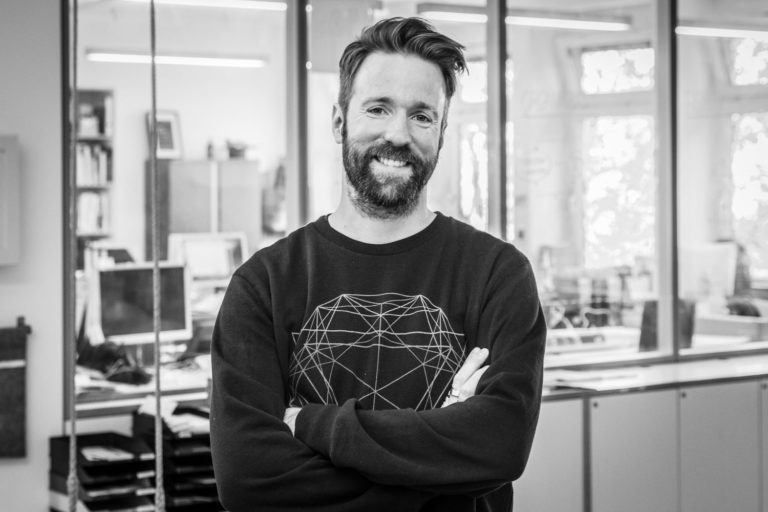
Let us push the conversation into a more dystopian direction: I see several disturbing questions within the fields of biodesign and technological body enhancement. Just think of designer babies and upgraded human capacities… Who has access to these new domains of design? That is ultimately a question of inclusion and exclusion.
That’s right. So far, technological solutions – in a disability context – were meant to compensate certain missing parts of the body or certain body dysfunctions. However, today we can start tuning our bodies so it can get “better” than the “original” version. Body enhancement will be a big challenge, because it can lead to a dangerous separation between people who can afford, or want to tune their bodies and those who cannot, or do not want to.
Exactly, and in the long run social fractures might not only be induced by financial gaps, but also by enhanced biological capacities and differences… This could also shape the notion of “disability”. In one of your earlier interviews you stated that “the word disability is, at best, an inappropriate label for a poorly designed world.” Is design more than just the creation of functional tools? Can it shape meaning? Can we understand design as a way of deconstructing certain social concepts?
If we think of disability, we very often interpret it through a medical model, which spans from diagnose to rehabilitation. In case your sight gets worse, you need glasses, and you can become an almost “perfect” human being again. This model defines certain bodies and bodily conditions as positive, others as negative. Although, we as designers can design our world, we can redesign a building, our communication systems, we can design so much that the aspect of having two legs, three legs or no legs is not a prescriptive condition anymore. What I want to express, is that we might think differently about disability if we reduced the subject less to aspects of physical dysfunctionality and more in relation to our (often poorly) designed world, in which people might feel more included or excluded. Design certainly shapes our perception. The level of access to our environment defines which people we might consider disabled. Disability is a design question, and it puts the designer into a tricky role. The designer is a decision maker after all.

Does this role reflect a top-down relation between the designer and the user?
Yes, of course it does. Although you can involve people, you can let them participate, and make the design process a bit less top-down. You can also provide tools for people to create their own methods, find their own solutions, but some kind of hierarchy always remains… If you have a problem with your ear, you will visit a doctor. She might help you, but this also means dependence. We can try to minimize dependence, but cannot dissolve it entirely.
Besides participation another design strategy that might tackle certain social concepts or assumptions is speculation. What role can speculative design play in the processes you described earlier?
Whether it be research or design, speculation is usually one of the first steps we take. You raise a question, set up a hypothesis, than find out if it works or not. Speculation is something we do every time, when we start to design or research something. It is an essential part of the process. Scientists, on the other hand, often try to avoid the term because the concept of science is somehow contrary to that of speculation. In philosophy, however, the term speculation has a completely different connotation, namely that it is about knowledge indeed – knowledge that goes beyond the limits of experienceable everyday actions. Which brings us back to design. Much of what designers do and what they deal with lies in the future – so it is always speculative.
Can speculative design be described as a special type of research methodology?
Speculative design is an approach, tool or method aimed to trigger certain discourses or to visualize or make tangible certain utopian or dystopian directions. It uses aspects of storytelling, imagination and fabulation. I think it is worth practicing, although there have been critical voices around it over the past years.
Speculative design projects usually end up in the gallery space…
Yes, that is an argument. Many of these projects do not really have broad social impacts. On one hand, I share this criticism, on the other hand speculative design projects usually do not consider themselves to be real solutions, but they are supposed to make you join a discourse, bring you on a journey, give you an impulse. Speculative design, critical design and design fiction are meant to trigger people. I find it especially interesting to find a point where these kind of practices can be combined with real life situations. A design project being speculative, does not necessarily mean, that it cannot be applied to real life…
In another book, I have published recently – Design (&) Activism – we discover a broad range of speculative objects in the context of recent public protest movements. Here, we can observe tendencies of manifesting themselves in real-live context, also being able to intervene there. Other than the – often elitist, abstract critical, speculative design projects that have no real impact, these seem to offer opportunities for collaborative approaches with and amongst different communities.
You have to look in the future, and from that insight, you can derive certain solutions for the present. This combination is interesting. The criticism against the gallery is not criticism against the institution itself, but rather against the fact that the discourses stay within a bubble. Designers trigger a discourse amongst designers or a circle of an intellectual elite. That is a critique many speculative design projects have to face.
Do you use speculative design in your own practices?
Not as a general method, but I discuss it in some of my university courses. Many speculative practices are inherent in both design and research anyway: modelling, prototyping, simulation, making things graspable, trying to show what cannot yet be experienced. Or more generally: anticipation, assumption, foresight and expectation. In Hamburg, we have recently launched the Speculative Space (“SpecSpace”), an experimental laboratory for speculative and new experimental research in design. The notion of speculation triggers new forms of creative, provocative and experimental (knowledge) production. Which not least includes the philosophical speculation and thus the claim to make the world intellectually accessible. Speculative Design as an epistemic practice, so to say.
A lot of speculation happens within the framework of the university. Universities are utopian places, in that sense… but not only galleries and universities can host speculative design projects, also technology labs step up as promoters.
Absolutely! Just look at MIT Media Lab.
I could imagine your Lorm Glove being developed there. Can you describe that project?
It is a project about deafblind people, who usually live very isolated. One common way for them to communicate is the Lorm alphabet. It works by touching somebody’s hand. If I touch the top of your thumb, it stands for the letter “A”, if I swipe down from the top of the middle finger to the bottom of the palm, that’s an “L”, if I draw a circle in the palm of your hand, it means the letter “S”. Since this method requires both conversation partners to be familiar with the Lorm alphabet, there are not many people who use it. If you are deafblind, you have your parents, maybe some friends you can communicate with. Furthermore, you have to be in reach to be able to touch your communication partner.
In case of the Lorm Glove project we developed a wearable communication device – a glove with sensors – which allows for deafblind users to write a text message into their own hands. The touch-information will be translated into text, which can be sent to other devices, gloves or a smart phone. It enables two-way communication: the receiver can send back a text or voice message, which the glove can perceive as tactile stimulation through little vibrating built-in motors. If the glove vibrates at the top of my thumb, I will know that you just sent me a letter “A”.
Complex design projects, like this, usually require cooperation. Who are you working with? How does the role of the designer change in this transdisciplinary context? Do you need new skills that “traditional” industrial designers not necessarily have? The designer as curator comes to my mind… someone who electrifies synergies between distinct knowledge fields.
I would also speak of designer as translator or designer as mediator. We often cooperate with non-designers, non-engineers, etc. One important task is to understand what people are talking about. You also have to translate the processed information into design-solutions and technical solutions, while you are mediating between tech-developers, researchers and other participants. It is a big challenge, that a lot of people underestimate, but that also makes the whole process more fun. The better of a translator you are, the bigger the chance, that the final result will actually make sense.
[1] Berardi “Bifo,” Franco. 2018. Breathing. Chaos and Poetry. Cambridge, Massachusetts: MIT Press.
Dr. Tom Bieling, senior research associate and lecturer at the Zentrum für Designforschung (HAWHamburg), teaches Transformation Design at NDU St. Pölten, and has been a Visiting Professor at the University of Trento and the German University in Cairo. In his research he mainly focuses on the social and political dimensions of design, particularly on aspects of design for social innovation and inclusion. He is Chief Editor at Designforschung.org, DESIGNABILTIES – Design Research Journal, Co-Editor of the book series Design Meanings (Mimesis), founding member of the Design Research Network, founder of the Institute for Applied Fantasies (Institut für angewandte Fantasie), head of the Ultràgallery, and Initiator of the International Research Network on Design (and) Activism. He has held numerous guest lectures and run workshops at international universities (e.g. Mumbai, São Paulo, Rio de Janeiro, Milano, Portland, Nottingham, Budapest, Eindhoven or Rotterdam). His work has been presented at international exhibitions and museums in New York, London, Vienna, Manchester, Sheffield, Brno or St. Gallen. He was announced “Young Innovator of the Year” by the Falling Walls Consortium and has published over 100 research papers, book chapters and academic articles. Recent books: Inklusion als Entwurf (Birkhäuser/DeGruyter, 2019), Design (&) Activism (Mimesis, 2019) and Gender (&) Design (Mimesis, 2020).
www.tombieling.com
Author: Ákos Schneider
